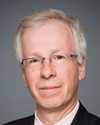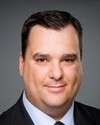Canada is the second-largest country in the world, but in population terms we're the 36th-largest country in the world. In order to actually get a proper scope and scale of the frustrations, needs, and hopes of official language communities across the country, you have to get out of Ottawa. You have to travel the country and you have to get around. There is a reason why members of Parliament have been afforded so many travel points for us to visit around the country. It's not just to shuttle to and from our districts, but it's also, in times like these when we have a summer break coming up, for ministers to travel the country and visit and find out from Canadians how things are going.
The benchmark timeframe of a year before the end of our road map is a perfect opportunity for me and others in our government to go around and to meet with people within the context and through the filter of official languages.
The previous road map was not entirely, but in good measure, based on the report that was given to our government and made public by Bernard Lord, former Premier of New Brunswick, and his consultation was in seven places in the country. What we're looking at here are at least 17 different places.
You'll notice as well in the list of cities mentioned in my opening statement that we'll be visiting all of Canada's provincial and territorial capitals, in large part because of the question that was asked earlier about education. Because we have these agreements with the provinces where we have transfer of funds agreements with all the provinces, the provinces are an essential component of the success of the road map, especially on the education side. So we'll be visiting there and we'll be visiting these communities.
As I found on the heritage side, the culture side of my portfolio, when you get out of the biggest cities of the country and you actually visit small suburban and rural communities and villages, you start to get a very different dynamic of the understanding of the pressures and needs and hopes and aspirations of official language minority communities.
The largest francophone community west of the Red River is Maillardville, which is in my community of Coquitlam, British Columbia, and they have very specific hopes. They've gone through incredible changes there, but their hope is that, for example, the Government of British Columbia continues to invest in Maillardville junior secondary as a francophone junior high school, and that they still have the same levels of investment and they can protect that francophone factor in Maillardville, which is really important.
That's very different from some of the concerns the QCGN has talked about, the concerns and frustrations and hopes that the anglophone minority communities have in the province of Quebec.
But you're not going to hear that if you just go to and from your riding, and stay in Ottawa. You have to go to those communities, listen to them, talk to them, and feel it in a first-person sense, because that absolutely contributes to one's better understanding of the way to go in the future.





